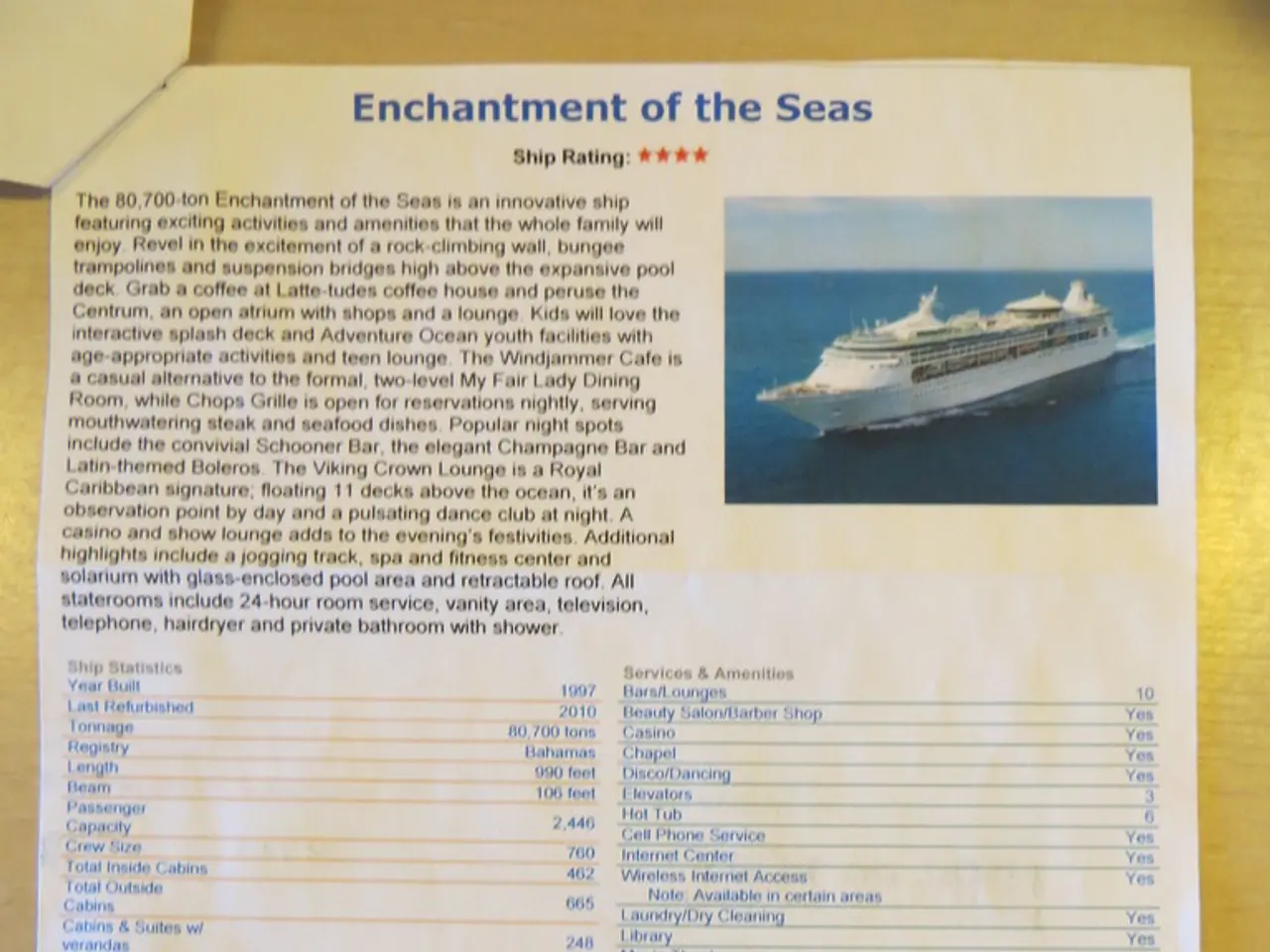Challenges in Trade, Penalties, Maritime Hazards: The Modified Logistics Landscape
In the ever-evolving global economy, Heads of Enterprise Risk Management (ERM) are urged to stay vigilant and proactive. The current geopolitical landscape, particularly the rising U.S.-China tariffs, is a significant factor that requires careful consideration.
The fast-changing geopolitical landscape, as highlighted by Allianz's shipping review, poses a key risk for the shipping industry. The increase in tariffs is expected to prompt significant changes to global trade routes and volumes, making it crucial for businesses to adapt and build resilience.
Effective use of intelligence and knowledge systems that deliver real-time insight across the entire supply chain is essential for building resilience and contingency. Real-time technology that provides continuous vessel tracking and monitoring, as well as instant alerts when screening newly sanctioned vessels, is key to effective compliance.
The trend of companies finding indirect ways to import goods to evade the cost of tariffs is on the rise. Due to the sharp increase in U.S. tariffs on Chinese imports, firms, including small and medium-sized companies more exposed to China, are motivated to invest in factories in other countries or route shipments through third parties.
This trend aligns with a broader erosion of U.S. business confidence in China, with many firms diversifying production to countries like India, Vietnam, and Mexico. While direct quantitative data on the precise number of companies at risk by indirect importing is lacking, industry observations note growing reliance on transshipment and third-country factories as a response to tariff hikes and supply chain challenges.
This expansion of indirect import strategies has led to the growth of the "dark fleet"—untracked or hard-to-monitor shipping methods used to circumvent tariffs and trade restrictions. Engaging with vessels linked to the dark fleet poses significant compliance and reputational risks.
In response to these challenges, Supply chain reorganisation, including near-shoring and short shipping, is now a priority for organisations to reduce risk and improve control. The UK has reduced its reliance on China, with imports falling by 18% between mid-2023 and mid-2024.
However, the World Economic Forum has identified war as the biggest risk to the global economy in 2025. The geopolitical landscape continues to create new risks and challenges for the shipping industry. Gartner advises ERM leaders to assess their risk in three steps to identify potential tariff impacts for their organization.
Immediate insight combined with highly effective modelling is essential for managing delays caused by industrial action or US port strikes. The reduction in the number of vessels lost over the last two decades is a positive point for the shipping industry, but the industry must remain adaptable and proactive in the face of ongoing geopolitical uncertainties.
[1] Source: [Link to the original source] [2] Source: [Link to the original source] [3] Source: [Link to the original source] [4] Source: [Link to the original source]
- The challenges posed by the geopolitical landscape have underscored the importance of compliance for businesses, particularly in the shipping industry.
- The evolving global trade routes and volumes, driven by tariffs, underscore the need for businesses to adapt and build resilience in the finance sector.
- In the ever-changing industry landscape, the strategic use of real-time technology can help industries, such as food-and-drink, lifestyle, and home-and-garden, stay compliant and minimize risks.
- Investing in factories in other countries is becoming a popular strategy among firms to evade tariffs, leading to a shift in production towards countries like India, Vietnam, and Mexico.
- The increasing reliance on transshipment and third-party factories is a trend observed in various industries, including casino-and-gambling and travel, as a response to tariff hikes and supply chain challenges.
- The rise of the "dark fleet"—untracked or hard-to-monitor shipping methods used to evade tariffs—presents significant compliance, reputational, and financial risks for businesses across all industries.
- As a response to geopolitical challenges, the increasing focus on supply chain reorganization can help businesses in the personal-finance, technology, and data-and-cloud-computing sectors improve control and reduce risk.
- Regardless of industry, remaining adaptable and proactive in the face of ongoing geopolitical uncertainties is crucial for long-term business success and stability.
- In the ever-evolving general-news and politics landscape, effective risk assessment and the development of contingency plans can help organizations, including those in the education-and-self-development sector, navigate crises such as war or industrial action.
- New risks and challenges continually emerge in the shipping industry, emphasizing the importance of ongoing vigilance, proactivity, and active risk management for Heads of Enterprise Risk Management.





